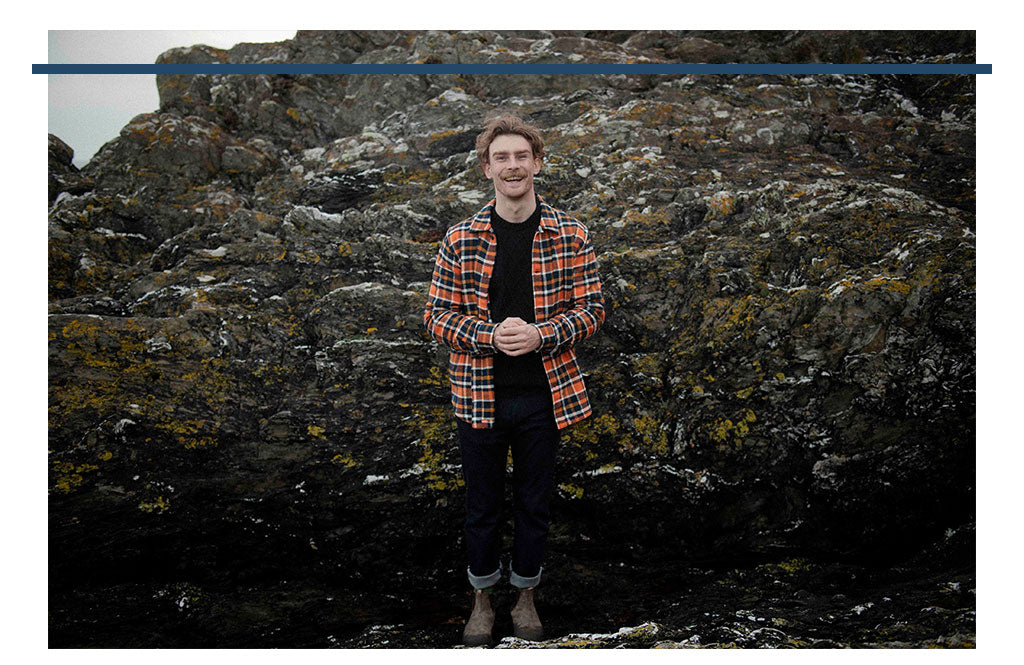When we shop for clothes, it often goes a little something like this: we identify something we need, we browse through the options, we find something we like, and we buy it. The problem is, we’re buying more clothes per person in the UK than any other country in Europe - and it’s causing clutter, stress and copious amounts of waste. But, it doesn’t have to be that way. With a few simple steps, you can cancel out the clutter, protect the planet, and create a wardrobe you won’t be scared of opening. So, let’s start at the beginning...
STEP 1: YOU NEED SOMETHING
Ask yourself - why do I need it? Have I already got it? Double-check your wardrobe. And then triple check it. Check your friend’s wardrobe. Check your work’s lost property. It is estimated that £30 billion worth of clothing lies unused in our wardrobes. So, if you have a look around, you may find what you’re looking for without spending a penny.
Now, don’t get me wrong, I love my Knowledge Cotton Apparel boxers - I was considering buying another pack. But, on a recent trip home, I found a few (clean) pairs of undies my brother had left behind. Three pairs of perfectly good underwear, saving me money and lowering my impact on the planet.
STEP 2: YOU BROWSE FOR IT
Check for the product’s footprint. This means a clear and transparent summary of where it was made, who made it and what it’s made of. If your brand cannot provide that, then I would start asking questions. How much will the item really cost? To the planet and to the people making it. Unless a brand gives you clear evidence otherwise, a low price tag will mean low quality and low ethical standards. So, here’s a few key questions to ask yourself:
1) Is it designed to last longer?
2) Is there clear evidence of workers being treated fairly? (Such as fair wages, worker training or a strong relationship between the brand and the factory workers.)
3) Is there clear evidence of caring for the planet? (Through sustainable materials, efficient production or circular design.)
If the answer to the second and third questions is yes, it’s more likely the answer to the first question will be, too. Three out of three is a very good score. But, do you really love it? Step number three will put that to the test.
STEP 3: YOU SPOT SOMETHING YOU LIKE
Too many of us start here - we spot something we like, and buy it. You’ve probably heard them called ‘impulse buys’, and they fuel our overconsumption. So, it’s worth putting a stopper in place.
When you find the item you’re looking for, wait. Leave it for a while, at least two weeks, and then have another look. Is it still in stock? If not, so be it. It’s not the end of the world. (If everyone did buy everything they wanted, it really would be the end of the world.) Do you still love it? If so, awesome. After giving it time, you’ll be more likely to love it for longer, take better care of it, and remember it’s in your wardrobe in the first place!
Take my most recent purchase as an example. The Nike x Ruohan Wang Blazer 77s came out over 18 months ago but, at £110, I knew I couldn’t afford them. I bookmarked the shoes on Instagram, and left it for a while. Earlier this summer, I knew I needed a new pair of shoes, and I had a bit of money to spend on something I knew I’d really love. So, I looked again. I wasn’t sure if a UK 11 pair would still be available. But, there they were! After 6 weeks of bidding on them, I have a pair of shoes I really value. I’ve already noticed how careful I am with them, because the wait makes them that bit more special. This applies to all the clothes we buy, too. Putting a stopper in place will narrow your choices down to the items you really need, and you really love. And, when you find them, there’s only one last thing to do...
YOU BUY IT
Giving your buying decisions time will help you pick the items you’ll wear proudly, care for consistently and love for the longest. You’ll end up buying better, and buying less, without even really thinking about it. Simple, yet rewarding, steps to more sustainable shopping.



